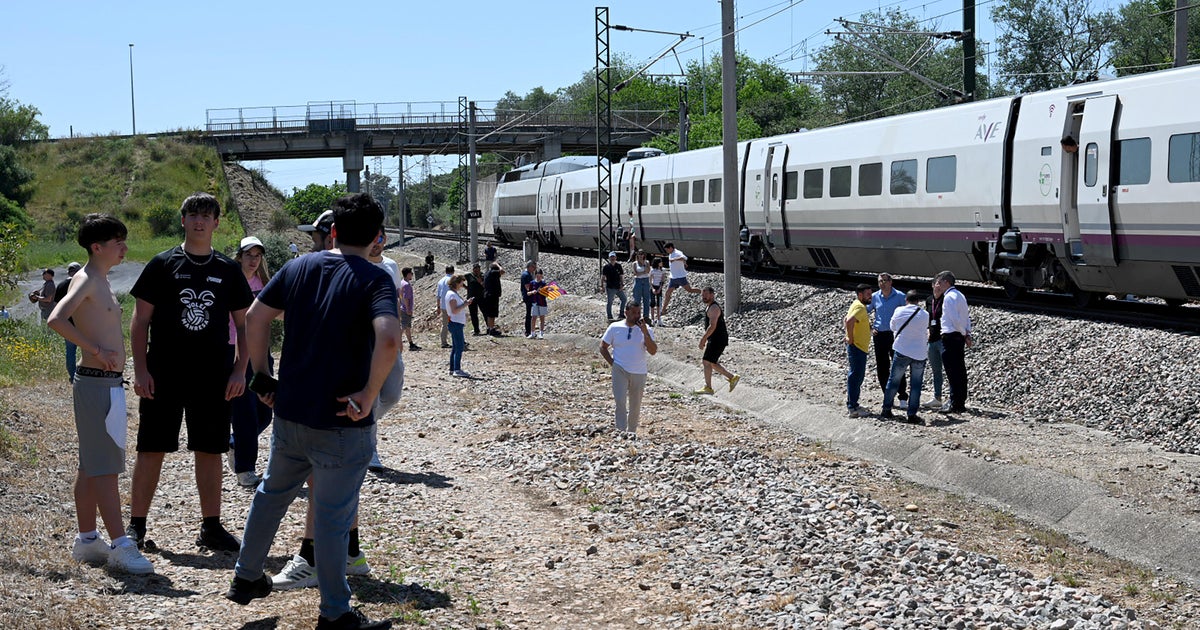North Korea claims test of missile capable of striking U.S. bases in Guam and Japan
Seoul, South Korea — North Korea said on Monday that it test-launched an intermediate-range ballistic missile capable of reaching the U.S. territory of Guam, or the U.S. military base on the Japanese island of Okinawa. It was the North's most significant weapon launch in years, as Washington plans steps to show its commitment to its Asian allies.
Sunday's launch could be a prelude to bigger provocations by Pyongyang, such as nuclear and long-range missile tests that pose a direct threat to the U.S. mainland, as the North tries to further pressure the Biden administration to win sanction relief or international recognition as a legitimate nuclear state.
According to the North Korean regime, the missile soared to an altitude of more than 1,000 miles — almost five times as high as the International Space Station's orbit, but came down steeply and landed just off North Korea's own east coast.
As CBS News Asia correspondent Elizabeth Palmer reported, however, the missile tested — the Hwasong-12 — is capable of travelling over 1,800 miles, and that puts major U.S. military bases in Guam and on the Japanese island of Okinawa, in range.
The North's official Korean Central News Agency (KCNA) said the purpose of the test was to verify the overall accuracy of the Hwasong-12. KCNA published two sets of combination photos — one showing the missile rising from a launcher and soaring into space and the other showing North Korea and nearby areas that it said were photographed from space by a camera installed at the missile's warhead.
According to South Korean and Japanese assessments, the missile flew about 497 miles and reached a maximum altitude of 1,242 miles before landing between the Korean Peninsula and Japan.
The reported flight details make it the most powerful missile North Korea has tested since 2017, when the country launched Hwasong-12 and longer-range missiles in a torrid run of weapons firings to acquire an ability to launch nuclear strikes on U.S. military bases in Northeast Asia and the Pacific and even the American homeland.
Guam is home to U.S. military bases that in past times of tensions sent advanced warplanes to the Korean Peninsula in shows of force. In August 2017, at the height of animosities with the then-Trump administration, North Korea threatened to make "an enveloping fire" near Gaum with Hwasong-12 missiles.
In 2017, North Korea also test-fired intercontinental ballistic missiles called Hwasong-14 and Hwasong-15 that experts say demonstrated their potential capacity to reach the mainland U.S. Some analysts say North Korea still needs to conduct additional ICBM test-flights to prove it has overcome the last remaining technological hurdles, such as protecting a warhead from the extreme heat and pressure of reentering the Earth's atmosphere.
In recent months, North Korea has launched a variety of weapons systems and threatened to lift a four-year moratorium on more serious weapons tests such as nuclear explosions and ICBM launches. Sunday's launch was the North's seventh round of missile launches in January alone, and other weapons tested recently include a developmental hypersonic missile and a submarine-launched missile.
Analyst Cheong Seong-Chang at the private Sejong Institute in South Korea said the Hwasong-12 launch was seen as partially breaking North Korea's weapons test moratorium. In April 2018, when North Korea suspended nuclear and ICBM tests ahead of now-dormant diplomacy with the Trump administration, Kim said North Korea didn't need to test intermediate-range missiles any longer as well.
Cheong said North Korea will likely test-launch its existing long-range missile if the United States spearheads fresh sanctions on it. Other experts said North Korea could conduct a nuclear test as well.
North Korea has publicly vowed to add more powerful ICBMs and nuclear warheads to its arsenal. They include a longer-range ICBM with precision strike capability, a solid-fuel ICBM that improves a weapon's mobility, a multi-warhead missile, a spy satellite and a super-sized warhead.
U.S. and allies react
After Sunday's launch, White House officials said they saw the latest missile test as part of an escalating series of provocations over the last several months that have become increasingly concerning.
The Biden administration plans to respond to the latest missile test in coming days with an unspecified move meant to demonstrate to the North that the U.S. is committed to its allies' security in the region, according to a senior administration official who briefed reporters on the condition of anonymity.
The official said the administration viewed Sunday's missile test as the latest in a series of provocations to try to win sanctions relief from the U.S. The Biden administration again called on Pyongyang to return to talks but made clear it doesn't see the sort of leader-to-leader summits Donald Trump held with Kim as constructive at this time.
South Korean and Japanese officials also condemned Sunday's launch, which violated U.N. Security Council resolutions that bans the country from testing ballistic missiles and nuclear weapons.
U.S.-led diplomacy aimed at convincing North Korea to abandon its nuclear program largely remains stalled since a second summit between Kim and Trump collapsed in early 2019 due to disputes over the sanctions. North Korea has refused to return to talks, citing U.S. hostility.
"Even if Washington had the bandwidth to pay more attention to the North Korean nuclear issue, Pyongyang would likely continue to refuse direct talks because of the pandemic, keep perfecting its weapons technology, and maintain its high price tag for talks," said Duyeon Kim, an analyst at Washington's Center for a New American Security.
Observers say North Korea could suspend weapons tests during the Beijing Winter Olympics because China is its most important ally and aid benefactor. But they say North Korea could test bigger weapons when the Olympics end and the U.S. and South Korean militaries begin their annual springtime military exercises.






